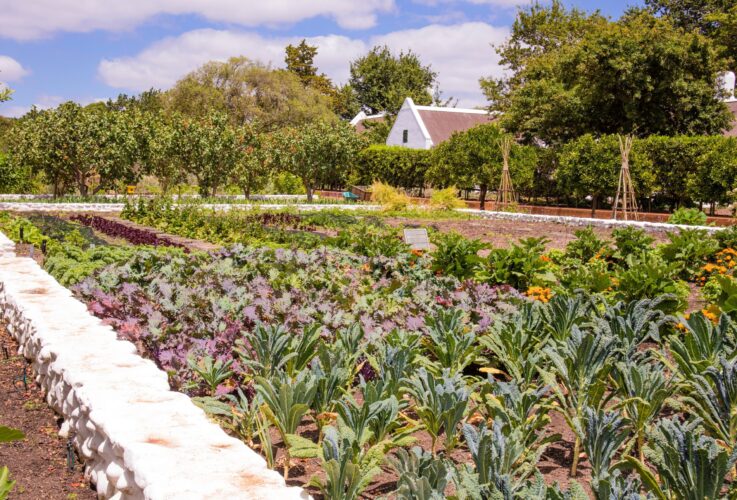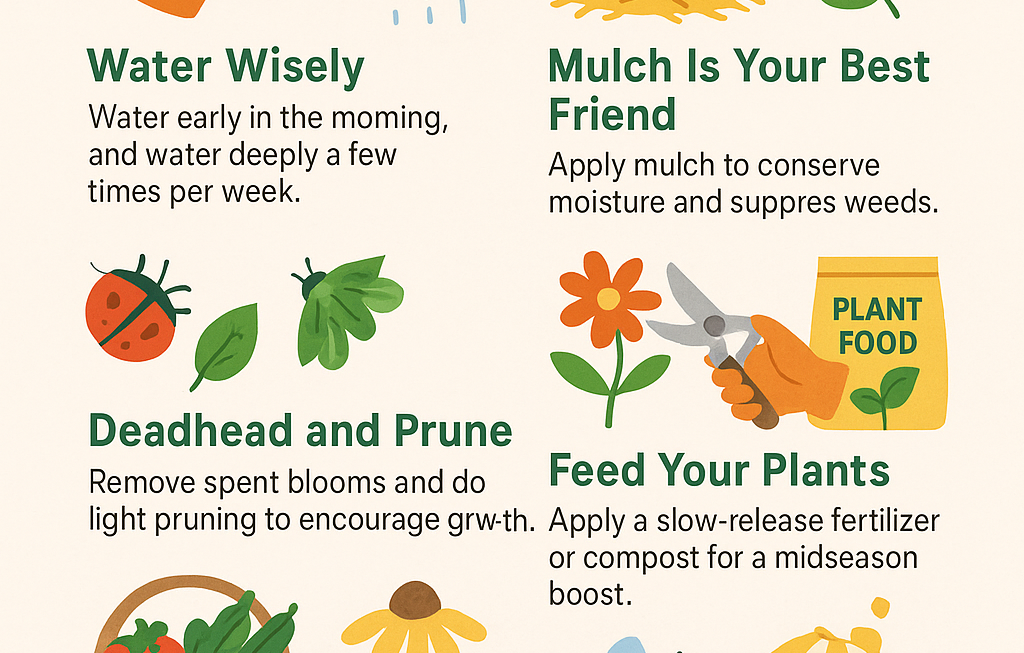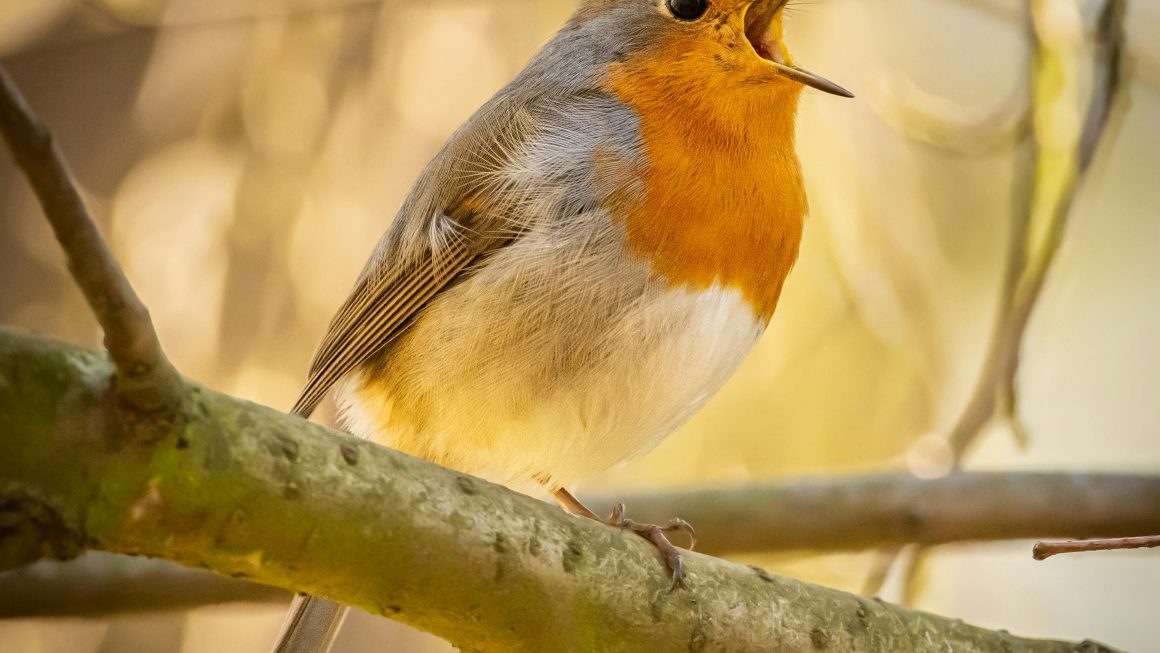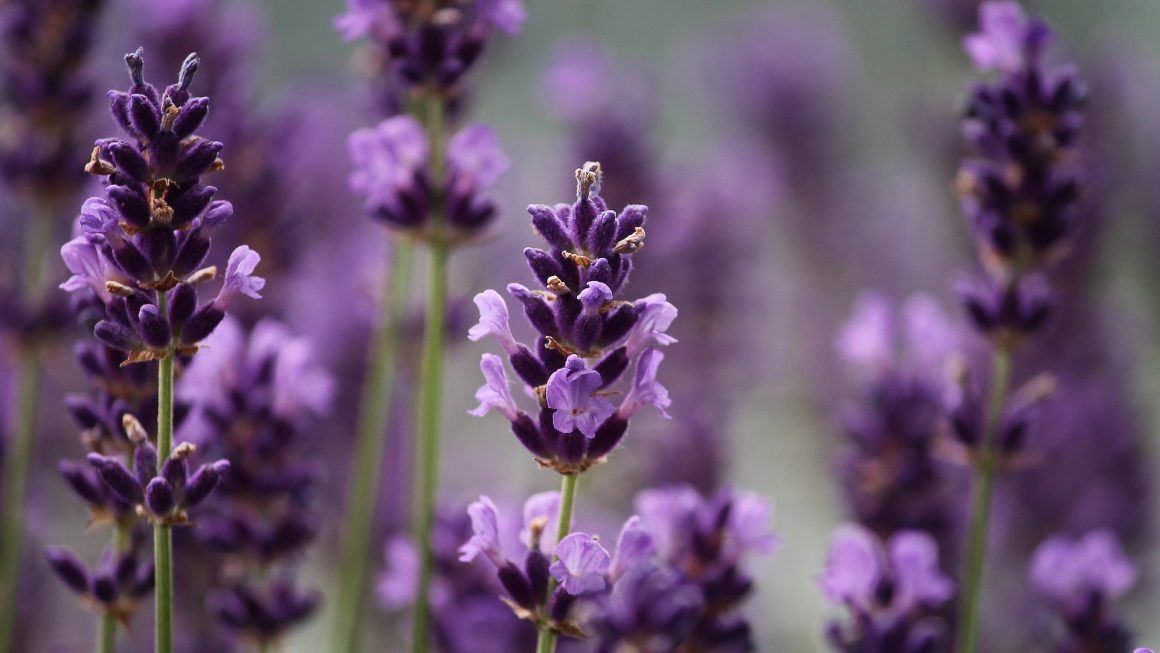This post may contain affiliate links. Please see my disclosure policy to learn more.
What does “Full Sun” mean for plants? When you see Plant in “full sun” on a label, it means that the plant needs direct sunlight for at least 6 to 8 hours a day. These 10 plants and flowers do well in sunny areas and are often drought-resistant. Meaning they do well with below-normal precipitation.
Bee Balm
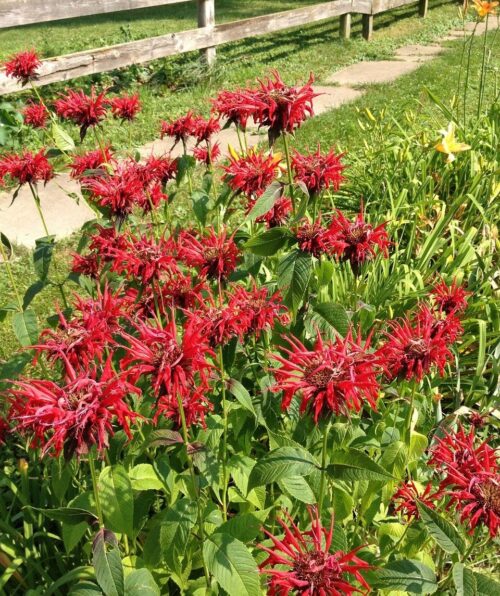
Bee Balm – Scientific name Monarda, other common names include bee balm, bergamot, horsemint, and oswego tea. Bee Balm is a flowering plant in the mint family, with beautiful blooms available in red, pink, purple, or white. Bee Balm thrives in full sun and will add color and beauty to any garden.
Catnip
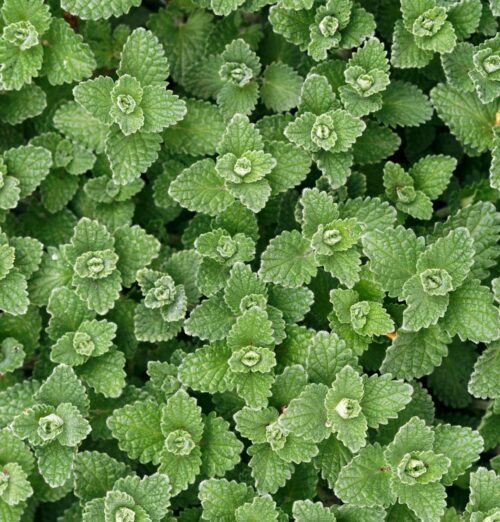
Catnip – A member of the mint family, also known as catmint or catwort. Catnip is drought-tolerant and prefers full sun; they don’t mind a bit of afternoon shade, especially when grown in hot climates. These hearty plants can be grown in almost any area of the garden as long as it’s in well-draining soil. Wet locations can lead to root rot.
Columbine
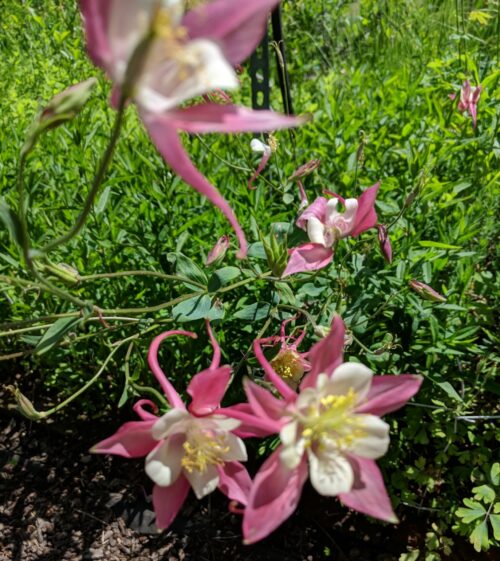
Columbine – An easy-to-grow flower that comes in a variety of colors. Columbines enjoy full sun to partial shade and are often an attractant for hummingbirds. Established columbines are drought-tolerant perennials that re-seed and spread easily.
Hardy Geranium
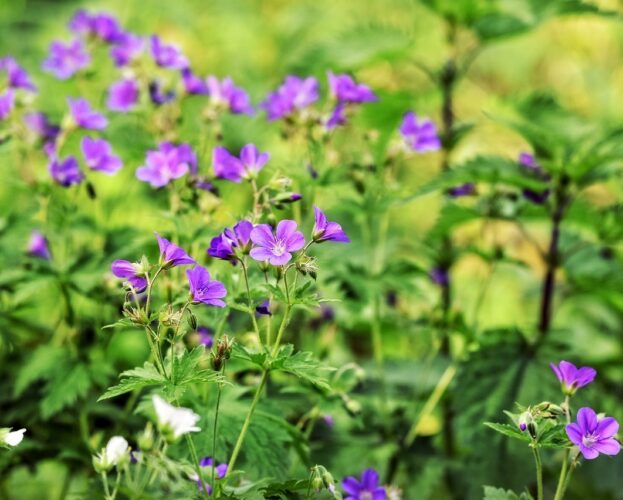
Hardy Geranium – Hardy Geraniums are perennial and available in over 300 varieties, most widely seen in pinks, purples, blues, and whites. Most do well in full sun to partial shade and they prefer well-draining soil. The warmer the climate, the more the plants will appreciate some afternoon shade
Lavender
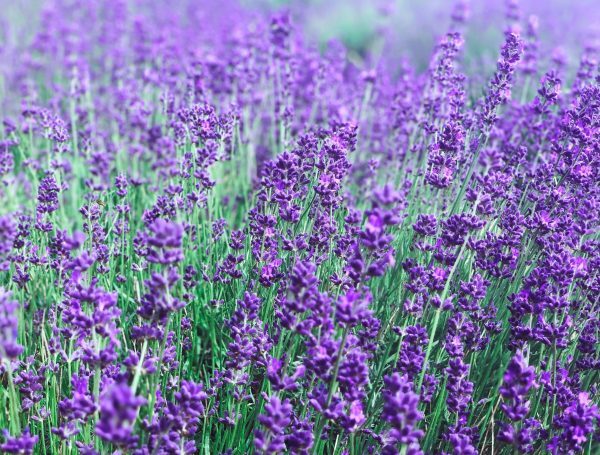
Lavender – A shrubby perennial plant in the mint family, lavender is grown for its flowers and fragrance. Lavender does well in full sun and hot, dry conditions. It is suitable for use in a variety of landscape settings and is an excellent candidate for areas prone to drought.
Peony
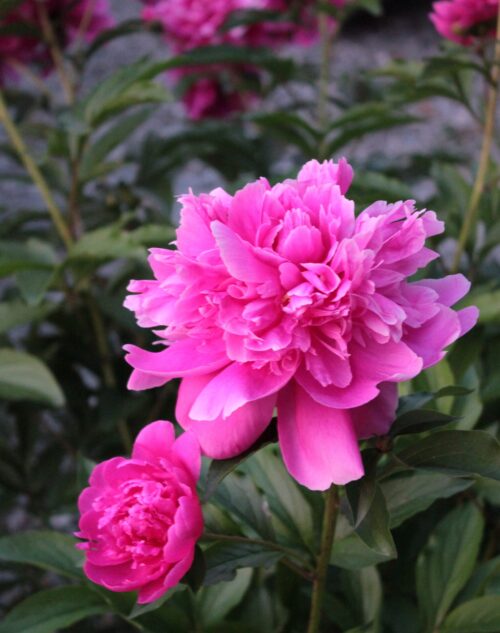
Peony – Peonies like sunny locations and well-draining soil. They bloom best in sunny spots that get 6 to 8 hours of sunlight each day. Peonies are extremely fragrant and they come in a wide range of colors.
Rhubarb
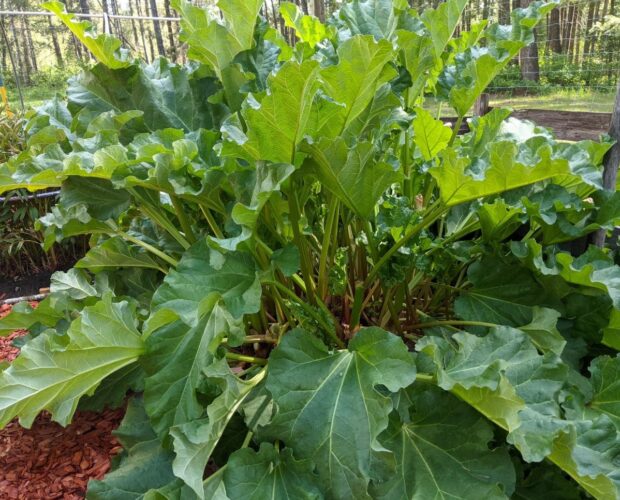
Rhubarb grows best in climates where the ground freezes in winter. In naturally cold climates, plant rhubarb in full sun. For hot, dry climates, make sure rhubarb gets afternoon shade and lots of water. Rhubarb is a perennial plant that will grow for many years in the same spot. Choose a location that can accommodate the growth of rhubarb. They can grow to about 3 feet in diameter and can sometimes grow as high as 6 feet tall.
Rosemary
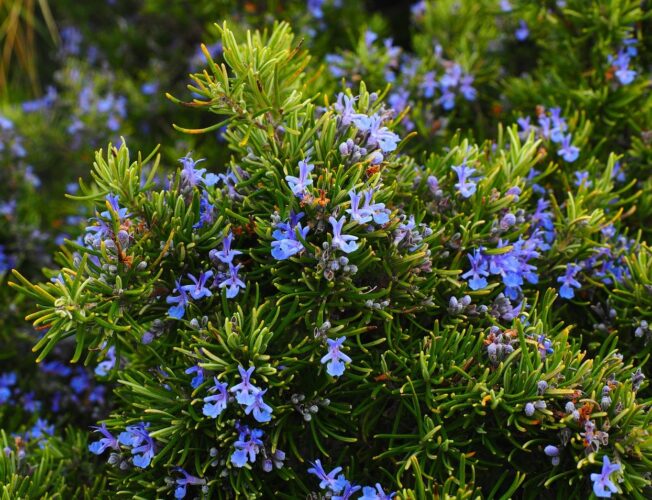
Rosemary – An evergreen shrub with beautiful blue flowers. Rosemary prefers full sun and well-drained soil. Rosemary does best in zone 8 or warmer but can be grown in containers in zone 7 and colder. Rosemary that is grown in a container in zone 7 and colder will need to be brought inside during cold weather.
Shasta Daisy
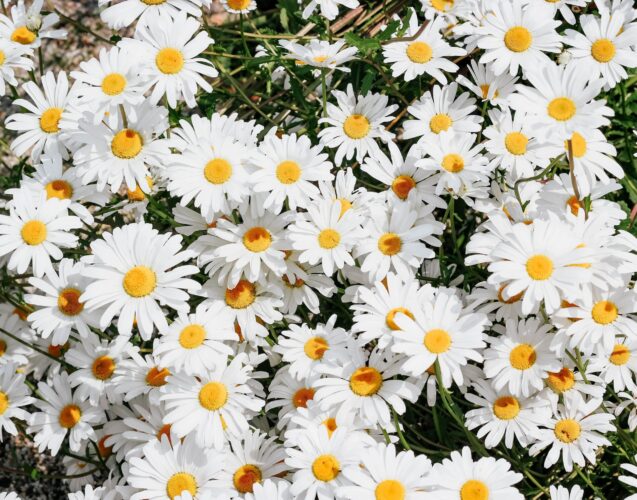
Shasta Daisy – Shasta daisies thrive in dry, sunny areas, and they can tolerate cold weather. They have the classic daisy appearance of white petals around a yellow center. Shasta daisies are perennial and return every spring or early summer and bloom until early fall. A wonderful addition to any garden.
Sunflower
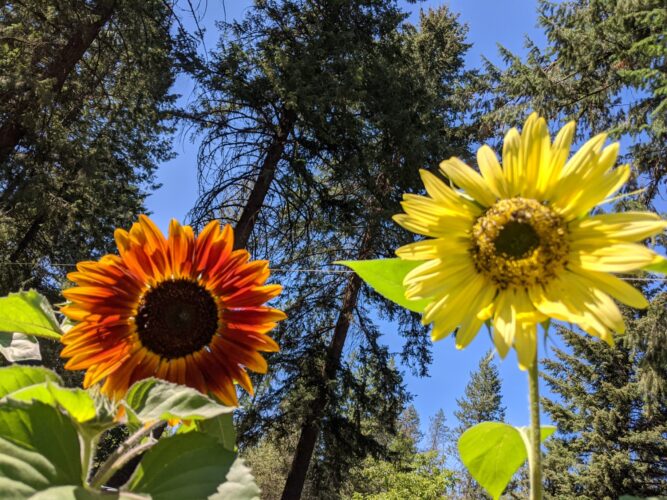
Sunflowers – Sunflowers are called sunflowers for a reason; they need full sun. Most sunflowers are annuals, which means they will not come back year after year. But it is easy to harvest and dry the seeds for planting the following year.
*Bonus*
Vegetable Gardens
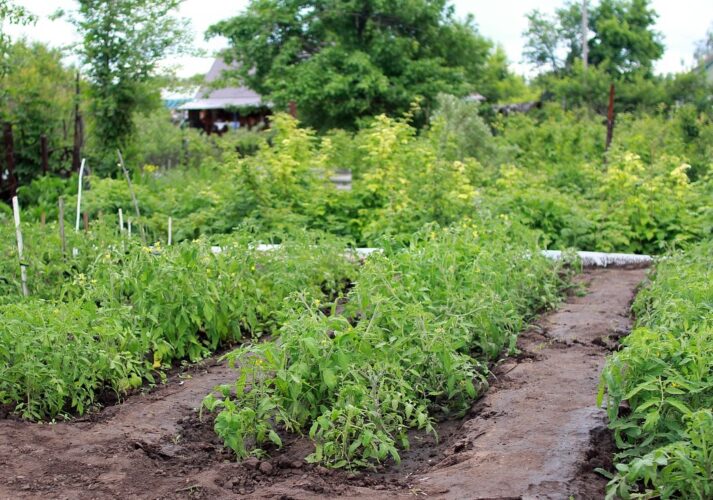
Vegetable Garden – Vegetable gardens are generally best positioned in the very sunniest location you can find with well-draining soil. The following 10 vegetables/fruits love the sun.
-Beans
-Corn
-Cucumbers
-Melons
-Okra
-Peas
-Peppers
-Tomatoes
-Squash
-Strawberries
- EXOTIC CHOCOLATE CHERRY SUNFLOWER SEEDS – Large 5–8" burgundy-black blooms with chocolate centers on 6–7 ft branching heirloom plants
- POLLINATOR FRIENDLY GARDEN SEEDS – Attracts bees, butterflies, birds, and pollinators, low pollen variety ideal for balancing habitat support with ornamental use
- ANNUAL SUNFLOWER 6–7 FEET TALL – Grows in full sun and well-drained soil, burgundy blooms from summer through fall, great for beds, borders, containers, and cut flowers
- EASY PLANTING INSTRUCTIONS INCLUDED – Every seed packet has details on germination, spacing, care, and seed saving for successful garden growth
- FAMILY OWNED USA SEED COMPANY – Heirloom non-GMO seeds from a trusted American brand, always fresh, untreated, and quality tested for garden success
- Beautiful - Large premium packets of Coleus Rainbow Mix (Plectranthus scutellarioides) seeds. This tender perennial mix produces leaves in a stunning array of colors in shades of yellow, white, green, pink, red, and deep maroon. Leaves will color as they mature outdoors. Minimum of 250 mg per packet (about 800 seeds).
- Productive - Rainbow mix coleus germinates in 10-14 days when soil temps are 70-75°F. Plant 1/16” deep and space 10-12” apart in an area with partial shade. This variety grows 18-30” tall with a spread of 8-12”. Plants will mature in 85-95 days, plant in USDA zones 4-10.
- Colorful & Fun - With its vibrant, ruffled foliage and uniquely felt-like leaves - coleus is sure to be a topic of interest in your garden amongst children and adults alike.The stunning variety of colors in the leaves adds a burst of color, texture and form anywhere they grow. Enjoy outside in the shady parts of your garden or grow indoors with sufficient light.
- Easy to Grow - Instructions included on each packet. Plus, we are available to answer all your questions. If these seeds don’t germinate, we will happily make it right for you.
- Safe and Sustainable - Our operation is fully solar powered, and Sow Right Seeds has taken the Safe Seed Pledge to sell only fresh Non-GMO heirloom seeds for you and your family.
- Sunflower Seeds for Planting – This planting packet includes 50 Mammoth Grey Stripe sunflower seeds (Helianthus annuus). Mammoth grey stripe sunflowers are some of the tallest sunflowers in the world. These flowers grow 9-12 feet tall with sun bursting yellow flower petals.
- Non-GMO Heirloom Sunflower Seeds – All of Axel’s Garden Seeds are Heirloom & Non-GMO and are intended for the current and following growing seasons. Fresh garden seeds are always provided.
- Planting Packets with Instructions – Our colorful planting packets include all the necessary information to grow these flowers successfully. Each packet is 3 x 4.5 with a beautiful full color illustration on the front with growing instructions on the back.
- Easy to Grow – Plant these seeds ½ inch deep in well-drained soil. Wait just 90-110 days for matured Mammoth Grey Stripe sunflowers. If any problems occur, Axel’s Garden Seeds will provide whatever is necessary for your gardening needs.
- Variety of Seeds for Home Garden – Axel’s Garden Seeds offers unique fruit, flower, herb, and vegetable seeds. Each packet is hand packed with high-quality garden seeds.
- Wildflower Blends have a RESEALABLE POUCH - Helps wildflower seeds stay fresh by protecting them from moisture, which can cause premature germination or mold growth. It also shields the seeds from exposure to air and light, preventing them from drying out or losing viability over time. By keeping seeds in a sealed environment, the pouch ensures longer shelf life and better germination rates when planted.
- Multiple variations of wildflower seeds create a more colorful and vibrant mix because different species bloom in a variety of colors, shapes, and sizes, adding visual diversity. Since each flower has its own unique blooming period, the mix ensures continuous bursts of color throughout the growing season. Additionally, a diverse blend attracts a wider range of pollinators, enhancing the natural beauty and liveliness of the garden.
- 🌸 Wildflower Mix 🌿 🌼 Vibrant & Diverse Blooms – A stunning mix of colors, shapes, and sizes for a lively landscape.
- 🦋 Pollinator Magnet – Attracts butterflies, bees, and hummingbirds to support biodiversity.
- ☀️ Sun & Shade Adaptable – Thrives in various light conditions, from full sun to partial shade.
- TRANSFORM YOUR GARDEN WITH 1508 SUNFLOWER SEEDS FROM OUR MIX PACK - Brighten your garden with a vibrant mix of sunflower seeds for planting that offer stunning colors, towering heights, and pollinator support. Perfect for beginners or experienced gardeners alike.
- ATTRACT WILDLIFE AND POLLINATORS - This sunflower seed mix is a haven for bees, butterflies, and birds, enhancing your garden’s biodiversity. The blooms provide essential nectar and seeds, making your garden not just beautiful but also an eco-friendly, wildlife-supporting sanctuary.
- HEIGHT AND SIZE FOR EVERY SPACE - With varieties ranging from compact 2-foot Dwarf Sunspot to majestic 10-foot Large Grey Stripe, these sunflowers suit everything from small garden pots to expansive landscapes, adding dynamic height and vibrant color to your planting space.
- YEAR-ROUND BLOOMS IN WARM CLIMATES - These sunflowers bloom from summer to frost, and in regions like California or Florida, they can bloom year-round. Enjoy months of stunning flowers that keep your garden lively with bright colors and cheerful displays season after season.
- EASY TO GROW AND BEGINNER FRIENDLY - Whether you're new to gardening or an experienced enthusiast, these flower seeds are simple to plant and thrive in zones 3-9. With germination in just 7-10 days, they require minimal care and adapt well to most soil types, including dry conditions.
- BEAUTIFUL PURPLE ALYSSUM FLOWERS – Sweet Royal Carpet Alyssum seeds for planting produce a fragrant ground cover with clusters of vibrant blooms
- ATTRACTS BEES & BUTTERFLIES – This sweet alyssum flower seeds variety draws pollinators with its honey fragrance, ideal for eco-friendly gardens
- EASY TO GROW PERENNIAL SEEDS – Low-maintenance alyssum seeds thrive in full sun with moderate watering, versatile for borders, beds, or containers
- LONG-LASTING BLOOMS, SELF-SEEDING – Grow heirloom purple alyssum to provide extended color, plants reseed naturally and return each growing season
- FAMILY OWNED USA SEED COMPANY – Heirloom non-GMO seeds from Survival Garden Seeds, a trusted American brand; always fresh, untreated, and quality tested for garden success

